Rewording margall's "living word"
Tipo de material: Recurso continuoSeries Proceedings of the XIX World Congress of the International Federation of TranslatorsDetalles de publicación: San Francisco, CA : International Federation of TranslatorsAmerican Translators AssociationEdición: 2011Descripción: p. 93-109408 pTema(s):
En: World Congress, 19Resumen: Consistent with his poetic concept of the "living word", Catalan poet Joan Maragall (1860-1911) emerged as a powerful voice amid the conflicts that beset the social and political fabrics of his day -reacting, as Arthur Terry has written, "to his actual circumstances in an idiom which reflects the speech characteristics of his time." and his varying rhythms combined with lexical and sintactic simplicity (in contrast to his Romantic pedecessors) have "a resonance and an air of authenticity".
Recurso continuoSeries Proceedings of the XIX World Congress of the International Federation of TranslatorsDetalles de publicación: San Francisco, CA : International Federation of TranslatorsAmerican Translators AssociationEdición: 2011Descripción: p. 93-109408 pTema(s):
En: World Congress, 19Resumen: Consistent with his poetic concept of the "living word", Catalan poet Joan Maragall (1860-1911) emerged as a powerful voice amid the conflicts that beset the social and political fabrics of his day -reacting, as Arthur Terry has written, "to his actual circumstances in an idiom which reflects the speech characteristics of his time." and his varying rhythms combined with lexical and sintactic simplicity (in contrast to his Romantic pedecessors) have "a resonance and an air of authenticity".
| Tipo de ítem | Biblioteca actual | Colección | Signatura topográfica | Estado | Fecha de vencimiento | Código de barras | |
|---|---|---|---|---|---|---|---|
 Artículos/Analíticas
Artículos/Analíticas
|
Biblioteca Bartolomé Mitre | Colección General | 061.3:81'25 =111 FIT XIX 2011 (Navegar estantería(Abre debajo)) | Disponible | 3373-21 |
Navegando Biblioteca Bartolomé Mitre estanterías, Colección: Colección General Cerrar el navegador de estanterías (Oculta el navegador de estanterías)
| 061.3:81'25 =111 FIT XIX 2011 Editing strategies as an essential part of translator training | 061.3:81'25 =111 FIT XIX 2011 Enhancing working memory capacity for interpreters | 061.3:81'25 =111 FIT XIX 2011 On the intriguing relationship between literary translation and creativity. | 061.3:81'25 =111 FIT XIX 2011 Rewording margall's "living word" | 061.3:81'25 =111 FIT XIX 2011 Translation and world literature. | 061.3:81'25 =111 FIT XIX 2011 What interpreters can learn from translation theory | 061.3:81'25 (82) CON II 1993 II Congreso argentino de traductores e intérpretes exposiciones y conclusiones |
Consistent with his poetic concept of the "living word", Catalan poet Joan Maragall (1860-1911) emerged as a powerful voice amid the conflicts that beset the social and political fabrics of his day -reacting, as Arthur Terry has written, "to his actual circumstances in an idiom which reflects the speech characteristics of his time." and his varying rhythms combined with lexical and sintactic simplicity (in contrast to his Romantic pedecessors) have "a resonance and an air of authenticity".
No hay comentarios en este titulo.

